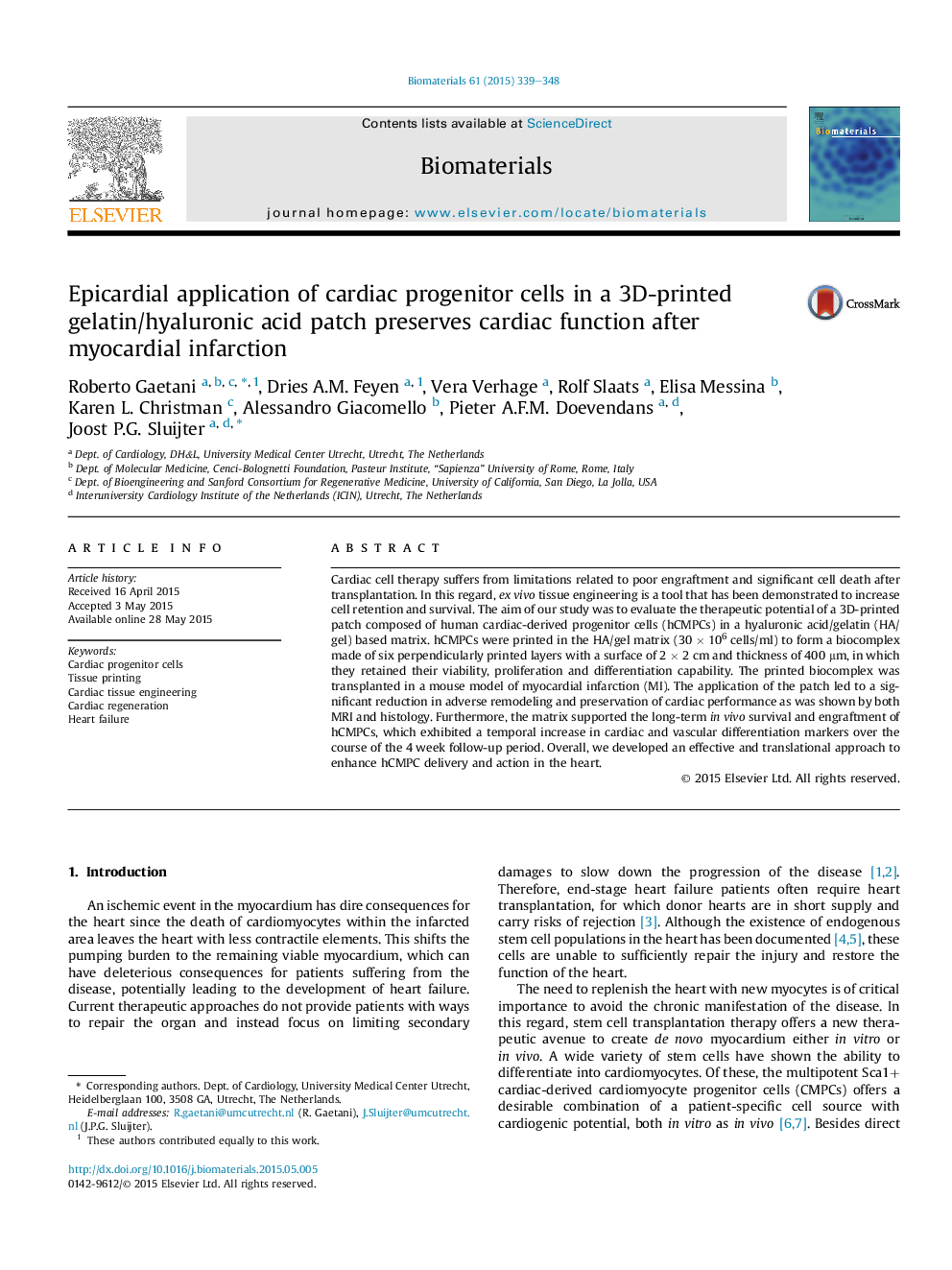| Article ID | Journal | Published Year | Pages | File Type |
|---|---|---|---|---|
| 6485590 | Biomaterials | 2015 | 10 Pages |
Abstract
Cardiac cell therapy suffers from limitations related to poor engraftment and significant cell death after transplantation. In this regard, ex vivo tissue engineering is a tool that has been demonstrated to increase cell retention and survival. The aim of our study was to evaluate the therapeutic potential of a 3D-printed patch composed of human cardiac-derived progenitor cells (hCMPCs) in a hyaluronic acid/gelatin (HA/gel) based matrix. hCMPCs were printed in the HA/gel matrix (30 Ã 106 cells/ml) to form a biocomplex made of six perpendicularly printed layers with a surface of 2 Ã 2 cm and thickness of 400 μm, in which they retained their viability, proliferation and differentiation capability. The printed biocomplex was transplanted in a mouse model of myocardial infarction (MI). The application of the patch led to a significant reduction in adverse remodeling and preservation of cardiac performance as was shown by both MRI and histology. Furthermore, the matrix supported the long-term in vivo survival and engraftment of hCMPCs, which exhibited a temporal increase in cardiac and vascular differentiation markers over the course of the 4 week follow-up period. Overall, we developed an effective and translational approach to enhance hCMPC delivery and action in the heart.
Keywords
Related Topics
Physical Sciences and Engineering
Chemical Engineering
Bioengineering
Authors
Roberto Gaetani, Dries A.M. Feyen, Vera Verhage, Rolf Slaats, Elisa Messina, Karen L. Christman, Alessandro Giacomello, Pieter A.F.M. Doevendans, Joost P.G. Sluijter,
